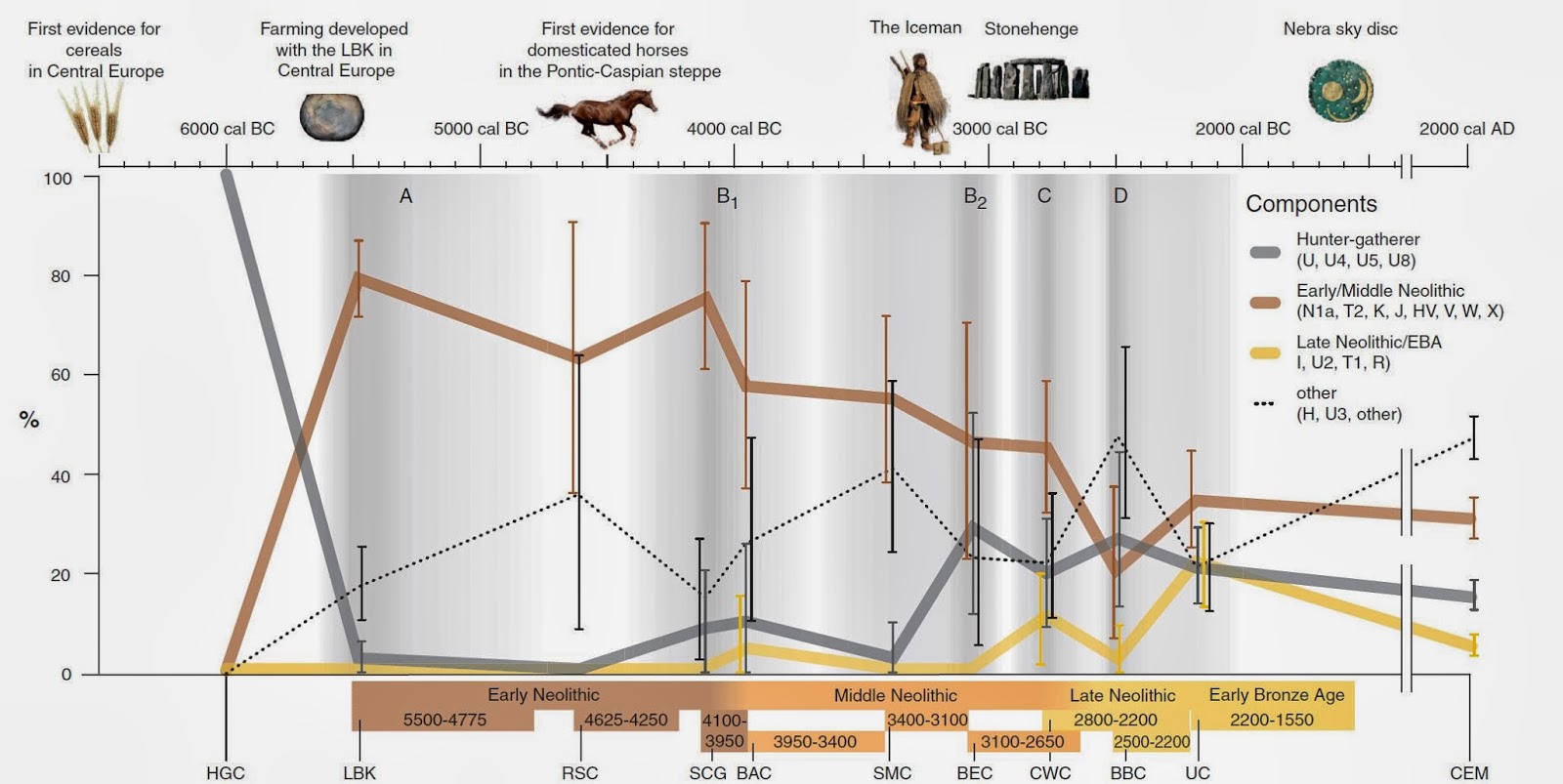Tomenable
Elite member
- Messages
- 5,419
- Reaction score
- 1,337
- Points
- 113
- Location
- Poland
- Ethnic group
- Polish
- Y-DNA haplogroup
- R1b-L617
- mtDNA haplogroup
- W6a
http://biorxiv.org/content/early/2016/09/30/078360
http://biorxiv.org/content/biorxiv/early/2016/09/30/078360.full.pdf
Abstract:
Davidski's comments:
http://eurogenes.blogspot.com/2016/09/male-dominated-conquest-of-europe-by.html
http://biorxiv.org/content/biorxiv/early/2016/09/30/078360.full.pdf
Abstract:
(...) Dramatic events in human prehistory, such as the spread of agriculture to Europe from Anatolia and the Late Neolithic/Bronze Age (LNBA) migration from the Pontic-Caspian steppe, can be investigated using patterns of genetic variation among the people that lived in those times. In particular, studies of differing female and male demographic histories on the basis of ancient genomes can provide information about complexities of social structures and cultural interactions in prehistoric populations. We use a mechanistic admixture model to compare the sex-specifically-inherited X chromosome to the autosomes in 20 early Neolithic and 16 LNBA human remains. Contrary to previous hypotheses suggested by the patrilocality of many agricultural populations, we find no evidence of sex-biased admixture during the migration that spread farming across Europe during the early Neolithic. For later migrations from the Pontic steppe during the LNBA, however, we estimate a dramatic male bias, with ~5-14 migrating males for every migrating female. We find evidence of ongoing, primarily male, migration from the steppe to central Europe over a period of multiple generations, with a level of sex bias that excludes a pulse migration during a single generation. The contrasting patterns of sex-specific migration during these two migrations suggest a view of differing cultural histories in which the Neolithic transition was driven by mass migration of both males and females in roughly equal numbers, perhaps whole families, whereas the later Bronze Age migration and cultural shift were instead driven by male migration, potentially connected to new technology and conquest. (...)
Davidski's comments:
http://eurogenes.blogspot.com/2016/09/male-dominated-conquest-of-europe-by.html
Looks like there were multiple waves of population movements from the steppe into Central Europe with three main Y-HGs involved: R1a-M417, R1b-L51 and also I2 (ancestors of Unetice), probably in that order. Women also came, but usually not very many in relative terms.


